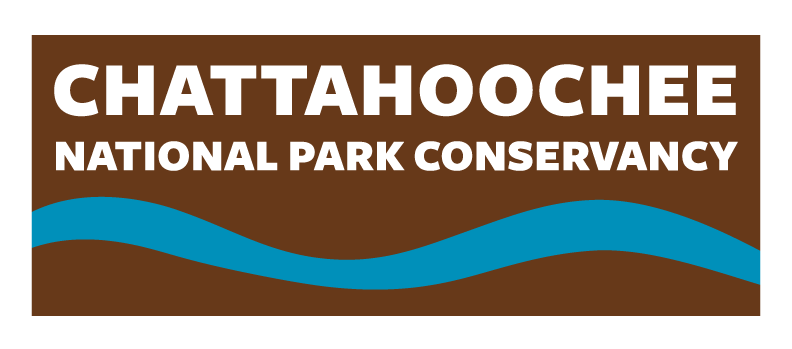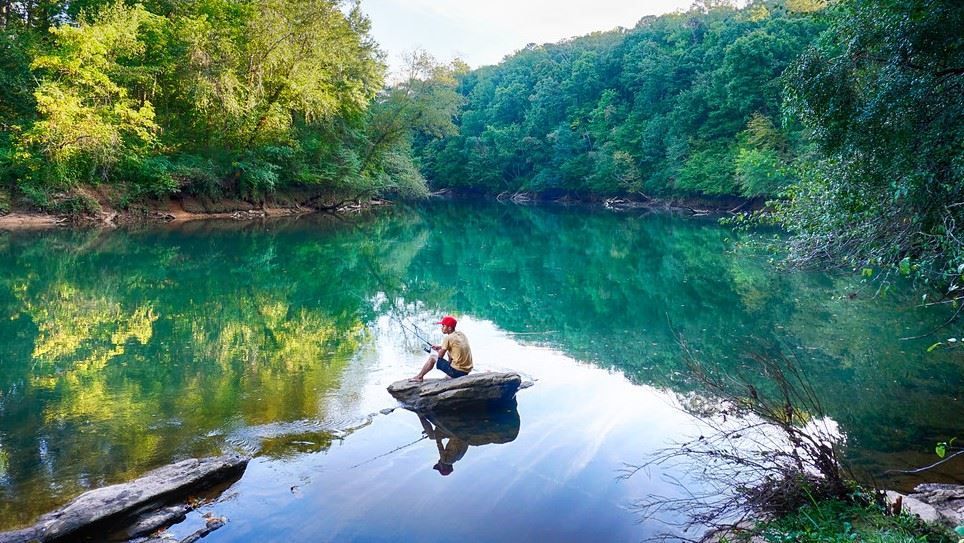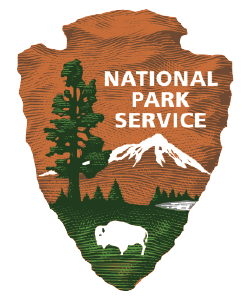Explore the Park
Fishing
The Chattahoochee River National Recreation Area (CRNRA) is a gem for anglers in the Atlanta area, offering an unparalleled opportunity to fish and enjoy nature without leaving the city. With public access to the Chattahoochee River and several serene ponds, CRNRA combines urban convenience with the beauty of a natural escape. Whether you’re casting for trout in the upper reaches or targeting bass in the warmer stretches, there's something for everyone (just don't forget to purchase your park pass!).
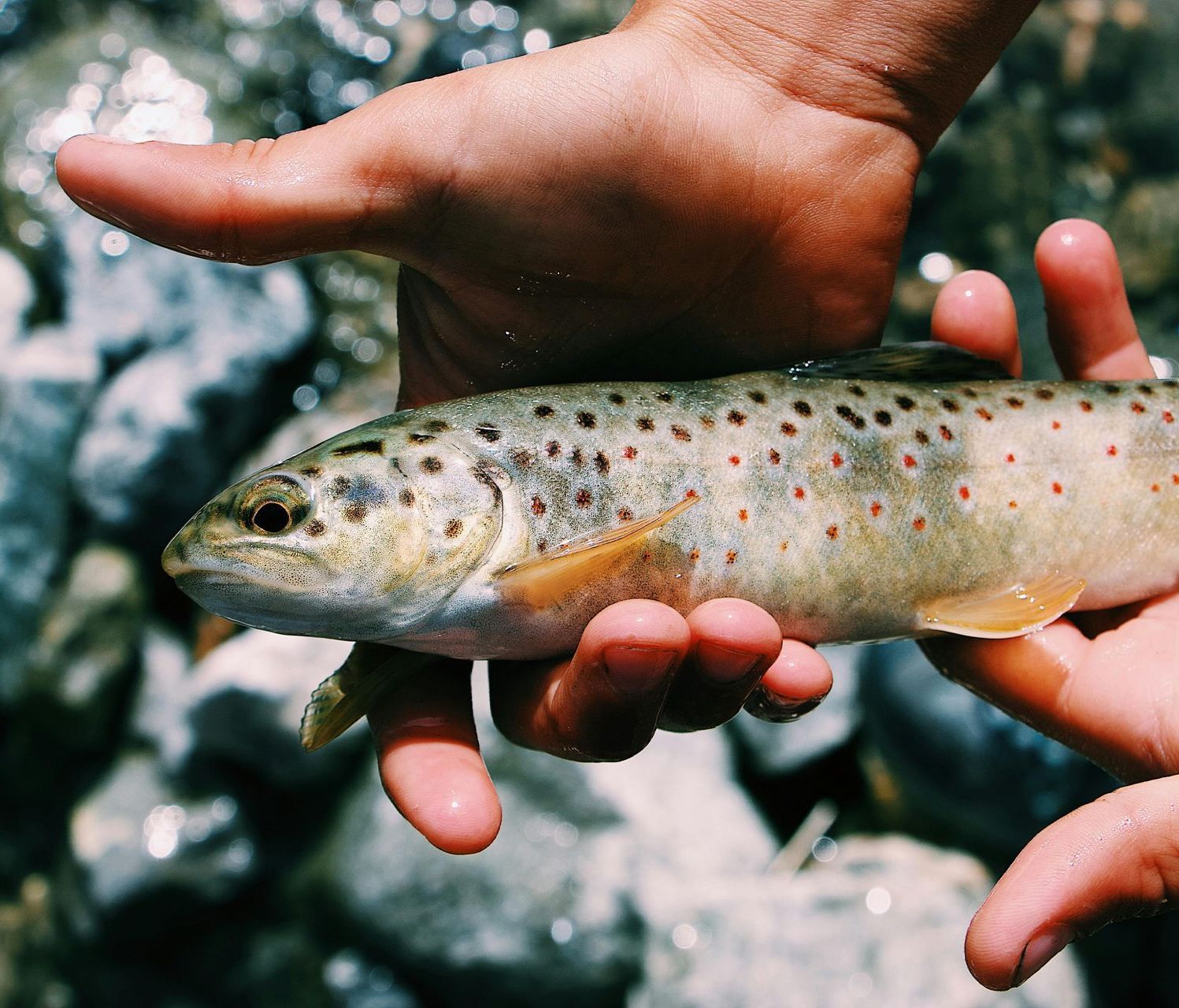
Fishing the Chattahoochee River
The Chattahoochee River is one of Atlanta's most valuable natural resources for fishing, particularly in the stretch below Buford Dam. The cold, oxygen-rich water released from Lake Lanier creates an ideal habitat for trout, making this section of the river a destination for anglers seeking rainbows and browns.
Rainbow trout, known for their adaptability, thrive in various conditions, including slower waters farther downstream. Brown trout, on the other hand, prefer the colder, faster currents closer to Buford Dam, often hiding in eddies and deeper pools.
Beyond trout, the Chattahoochee River is home to a variety of diverse fish, particularly in the warmer waters downstream of Morgan Falls Dam. Shoal bass, a regional favorite, thrive in rocky, fast-moving sections, while striped and largemouth bass can be found lurking in deeper pools. Panfish like bluegill and redbreast sunfish are abundant in calmer waters, making them perfect for beginners, and catfish are commonly caught in the river's slower, deeper areas.
Fishing Tips, Methods, & Regulations
Our local national park offers incredible opportunities for anglers of all skill levels, with a variety of fishing styles suited to the diverse habitats in the park. Fly fishing is especially popular for trout at spots like Jones Bridge, Island Ford, and Bowmans Island. Spinning and baitcasting work wonderfully for targeting bass and panfish in both the river and ponds, while bait fishing remains a simple yet effective choice for catching catfish and other species in slower waters.
No matter your method, you’re likely to find success at any of the park’s piers, boat ramps, launch points, or accessible areas for wading and bank fishing. Just remember, the river’s flow can change rapidly due to water releases from Buford Dam, so always check the flow before you go and wear a personal flotation device (PFD) when required or when wading for safety.
To fish in CRNRA (or anywhere in Georgia), you’ll need a Georgia fishing license, and if you’re fishing for trout, don’t forget to add the trout stamp. Licenses are easy to purchase online through the Georgia Department of Natural Resources.
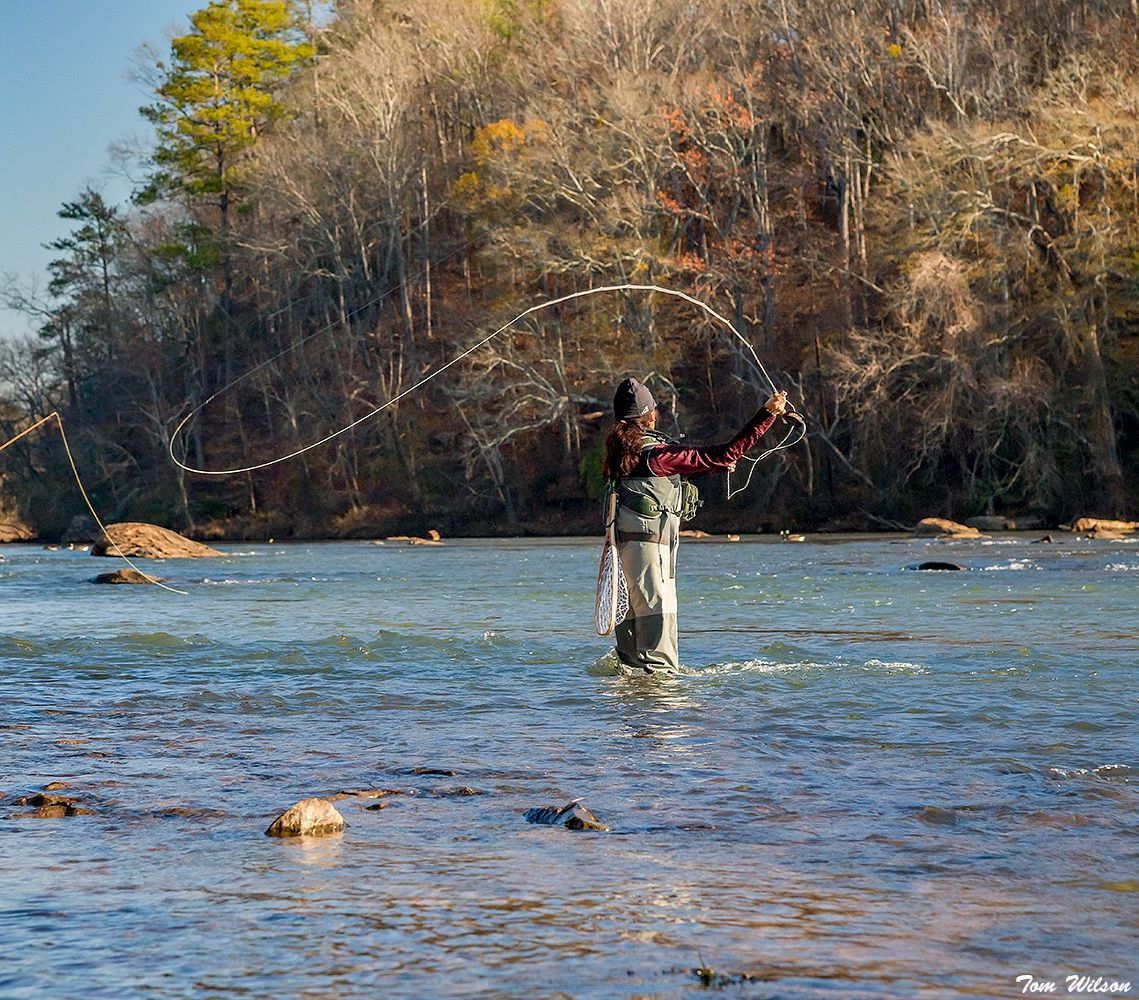
Check the Flow Before You Go
Water levels on the Chattahoochee River are influenced on a daily basis by weather and water releases from Buford Dam and Morgan Falls Dam. Before launching your boat or tube, check the flow rate and you'll learn what to expect, like how long the ride should take or if you will be bumping over rocks or in a flood. Check the River Flow Rate here.
Wear A Life Jacket
A U.S. Coast Guard-approved Personal Floatation Device (PFD) is required when boating, floating, or wading in the following areas of the Chattahoochee River:
- Between Buford Dam and the GA 20 highway bridge
- Between Morgan Falls Dam and the Morgan Falls boat ramp
For all other sections of the river within CRNRA,
a wearable PFD must be on board for each person in all watercraft, including float tubes. Children under the age of 13 are required to wear a PFD when the watercraft is underway.
Cold Water, Time, and WADING Ability
The Chattahoochee River receives water from the bottom of Lake Lanier, making it much colder than you might expect—around 50°F. Even the strongest swimmers and waders can be at risk of hypothermia in such cold water. Don’t underestimate the dangers of cold water and be mindful of how quickly it can affect your body.
Water Quality
Water quality in the Chattahoochee River can change quickly, especially after heavy rainfall. For the most current water quality updates, visit the BacteriAlert website.
Need help?
For non-emergency law enforcement assistance within the CRNRA, call 404-730-7911. In case of an emergency, dial 911.
Boat Ramps & Launch Points
- Bowmans Island (CRNRA) Buford Dam - Lower Pool Park, Little Mill Rd, Cumming, Georgia 30041, United States
- Settles Bridge (CRNRA - No boat ramp - kayak and tube only) Settles Bridge Park, 380 Johnson Rd, Suwanee, Georgia 30024, United States
- McGinnis Ferry (CRNRA) Mcginnis Ferry Road, Johns Creek, Georgia 30024, United States
- Abbotts Bridge (CRNRA) Abbotts Bridge Road, Duluth, Georgia 30096, United States
- Medlock Bridge (CRNRA) Medlock Bridge Road, Duluth, Georgia 30097, United States
- Garrard Landing (City of Roswell - No boat ramp - kayak/tube only) Garrard Landing Park, 8000 Holcomb Bridge Road, Alpharetta, Georgia 30022, United States
- Island Ford (CRNRA - No boat ramp - kayak and tube only) 1978 Island Ford Parkway, Sandy Springs, Georgia 30350, United States
- Don White Memorial Park (City of Roswell - No boat ramp - kayak/tube only) Don White Memorial Park, Riverside drive, Roswell, Georgia 30075, United States
- Azalea Park (City of Roswell) Azalea Park, 203 Azalea Dr, Roswell, Georgia 30075, United States
- Morgan Falls Park (City of Sandy Springs) Morgan Falls Overlook Park, 200 Morgan Falls Rd, Sandy Springs, Georgia 30350, United States
- Johnson Ferry North (CRNRA) 301 Johnson Ferry Road Southeast, Marietta, Georgia 30068, United States
- Powers Island (CRNRA - No boat ramp - kayak and tube only) Powers Island - Chattahoochee River National Recreation Area, 5450 Interstate North Pkwy, Sandy Springs, Georgia 30328, United States
- Paces Mill (CRNRA - Last takeout point) Paces Mill Boat Ramp, Atlanta, Georgia 30339, United States
Help Preserve Our Fishing Haven
Support Chattahoochee National Park Conservancy's efforts to preserve and enhance our beloved fishery! Your donation funds habitat restoration, water quality maintenance, and educational programs. As a member, you’ll also enjoy exclusive discounts on fishing gear and guided trips.
Purchase a Park Pass
A park pass is required for all visitors in all units of CRNRA. 80% of all fees collected help fund critical projects that improve services and protect resources in the park. Daily passes ($5), annual passes ($40), or annual senior passes ($20) are available for purchase online through NPS.
